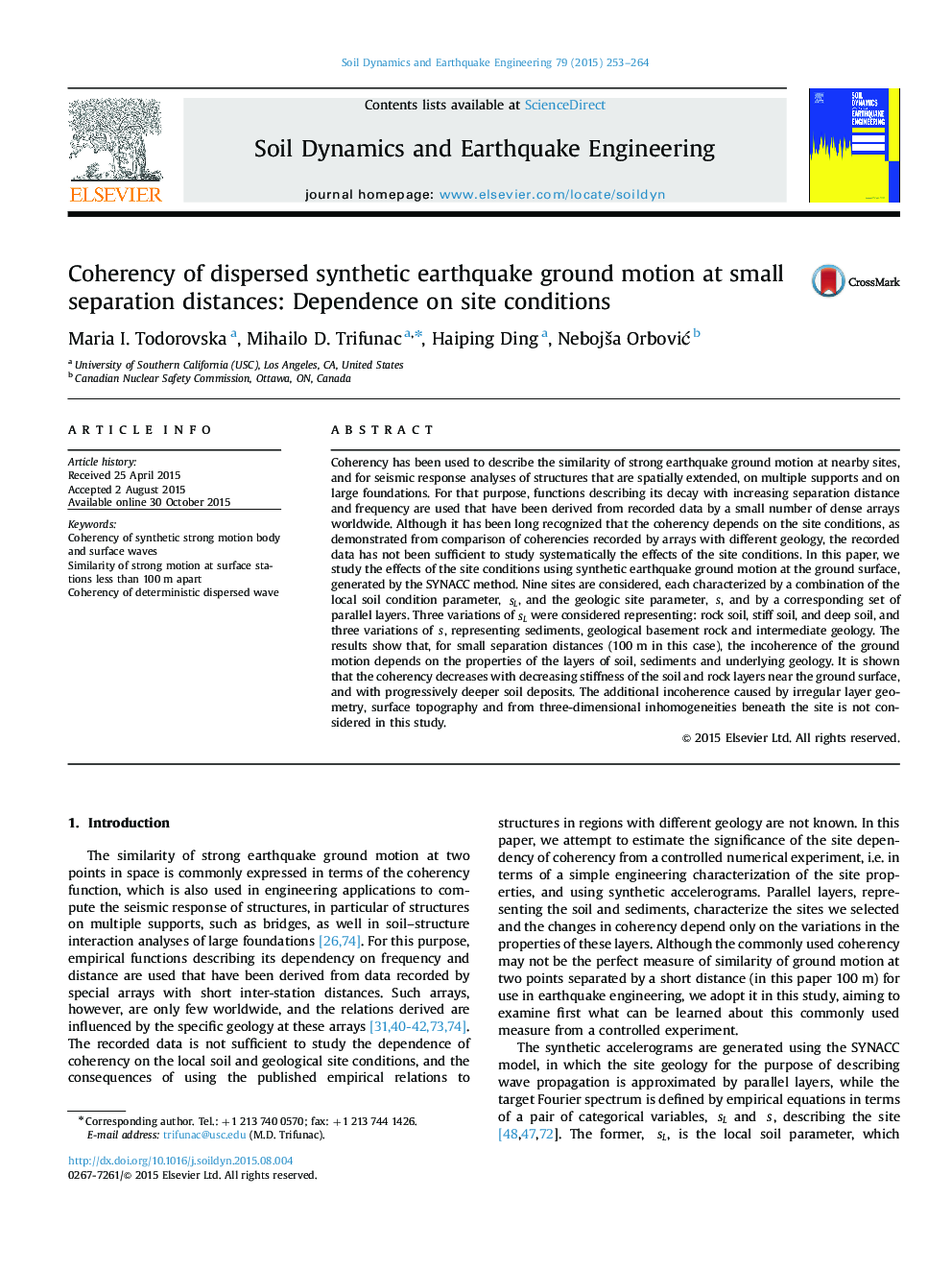| Article ID | Journal | Published Year | Pages | File Type |
|---|---|---|---|---|
| 304008 | Soil Dynamics and Earthquake Engineering | 2015 | 12 Pages |
•Coherency of strong earthquake ground motion for short separation distances.•Role of site conditions on coherency of earthquake wave motions.•Displacements of soil beneath large foundations.•Coherency of synthetic body and surface waves in parallel layers.
Coherency has been used to describe the similarity of strong earthquake ground motion at nearby sites, and for seismic response analyses of structures that are spatially extended, on multiple supports and on large foundations. For that purpose, functions describing its decay with increasing separation distance and frequency are used that have been derived from recorded data by a small number of dense arrays worldwide. Although it has been long recognized that the coherency depends on the site conditions, as demonstrated from comparison of coherencies recorded by arrays with different geology, the recorded data has not been sufficient to study systematically the effects of the site conditions. In this paper, we study the effects of the site conditions using synthetic earthquake ground motion at the ground surface, generated by the SYNACC method. Nine sites are considered, each characterized by a combination of the local soil condition parameter, sLsL, and the geologic site parameter, ss, and by a corresponding set of parallel layers. Three variations of sLsL were considered representing: rock soil, stiff soil, and deep soil, and three variations of ss, representing sediments, geological basement rock and intermediate geology. The results show that, for small separation distances (100 m in this case), the incoherence of the ground motion depends on the properties of the layers of soil, sediments and underlying geology. It is shown that the coherency decreases with decreasing stiffness of the soil and rock layers near the ground surface, and with progressively deeper soil deposits. The additional incoherence caused by irregular layer geometry, surface topography and from three-dimensional inhomogeneities beneath the site is not considered in this study.
